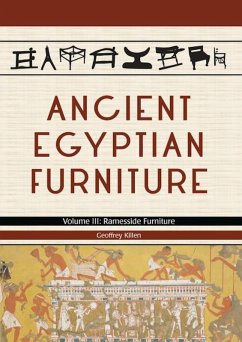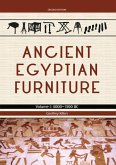In this third volume Dr Killen investigates how woodworking in ancient Egypt developed in the 19th and 20th dynasties. It establishes the range of wooden furniture manufactured during this period by surveying examples depicted in Ramesside Theban and Memphite tombs. Ancient records show how the procurement of furniture occurred at Deir el-Medina while the design and manufacturing of these furniture forms can be traced through a series of furniture sketches that are annotated with a range of marks and signs. These designs are seen in surviving examples of furniture from settlements such as Medinet el-Gurob. To facilitate the manufacture of furniture, procedures were developed that were managed by cooperatives of Egyptian artisans. These groups established a recognisable Egyptian furniture style that was employed throughout the Ramesside world. Depictions of furniture used by the ruling Ramesside elite are examined including a remarkable collection of furniture used by Rameses III, illustrations of which could once be found in a painted wall scene in his tomb (KV11) and still seen carved on the walls of his temple at Medinet Habu. These illustrations show how royal furniture was used as a symbolic tool to promote the Ramesside Empire at the edges of its sphere of influence. Temple furniture was also used to serve a religious purpose in the rituals performed by Ramesside priests, these forms are also analysed in this volume. This third volume contains a catalogue of known Egyptian furniture preserved in world museums that augments those catalogues found in the first two volumes of this series. The author also provides a distribution list with illustrations of a number of replica pieces of woodwork made by him that can now be found preserved in several museums and collections. The purpose of these replica pieces has been to analyse the design and construction techniques used by Egyptian carpenters using a range of replica woodworking tools.
Dieser Download kann aus rechtlichen Gründen nur mit Rechnungsadresse in A, B, BG, CY, CZ, D, DK, EW, E, FIN, F, GR, HR, H, IRL, I, LT, L, LR, M, NL, PL, P, R, S, SLO, SK ausgeliefert werden.









